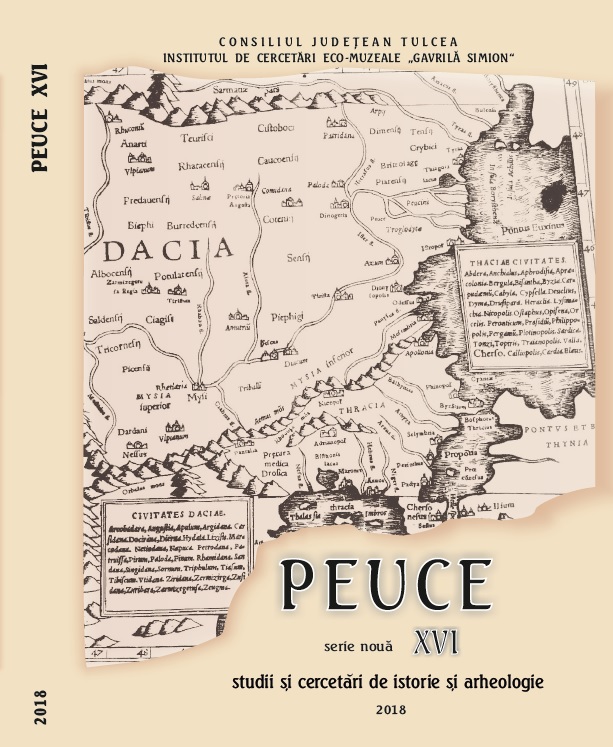Amphorae ex Aegysso. Fragments from Older Excavations
Amphorae ex Aegysso. Fragments from Older Excavations
Author(s): Radu-Octavian StănescuSubject(s): Archaeology
Published by: Institutul de Cercetari Eco-Muzeale Tulcea - Institutul de Istorie si Arheologie
Keywords: Romania;Lower Danube;Lower Danube archaeology;Aegyssus;Roman Empire;amphoras;roman amphora;
Summary/Abstract: This paper presents a sample of early and late Roman amphorae fragments discovered during several excavations performed at Aegyssus–Tulcea-Colnicul Hora in the 1959-1996 period, with the purpose of bringing a small contribution to the study of the economic history of the Roman Empire. The sample consists of 458 fragments.Typologically, 17 amphora types were identified, some of which have different versions: Dressel 43, Dressel 2-5, Dressel 24, Zeest 72, Zeest 94 (Šelov B and C), Berenice Middle Roman Amphora 5, Kapitän II, Agora M273, Kuzmanov XV-XVI, Spatheion, Opaiț D II, Opaiț D III, Opaiț E I – c, Carthage Late Roman Amphora 1, Carthage Late Roman Amphora 2, Carthage Late Roman Amphora 3 and Carthage Late Roman Amphora 4. Furthermore, out of these 17 types, it was determined, based on macroscopic fabric comparison, that 5 types were of Aegean origin, 3 types from the Eastern Mediteranean Coast, 7 types of Black Sea origin, one type from North Africa, while the LRA 1 and even LRA 2 types were produced in various centres in the Eastern part of the Empire.Chronologically, 5 types were distributed during the Early Roman Period, 10 types during the Late Roman Period and 2 types have been traced to the period between the 3rd and 4th century AD.Last but not least, the paper also proposes a method of calculating quantities of imported wine and olive oil during the two time periods of the Roman Empire.
Journal: Peuce (Serie Nouă) - Studii şi cercetari de istorie şi arheologie
- Issue Year: XVI/2018
- Issue No: 16
- Page Range: 205-226
- Page Count: 22
- Language: English

